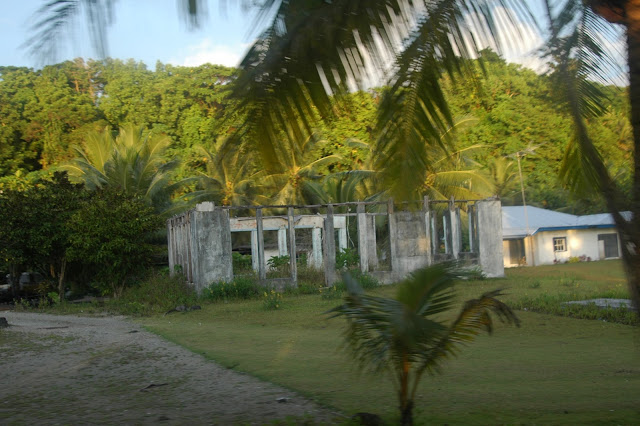
I dreamed about visiting my fathers birthplace for as long as I can remember. Finally, at 40, I made it. The circumstances, although some might not agree, made for a rather good first experience ~ my first impression will never be forgotten.
He's called Tualemoso, however, his family, or birth name is Ahsoon. I came to American Samoa for the first time to attend his funeral and burial. He was married to my dads oldest sister, Katerina. (That's who I'm named after). There are actually quite a few of us today, Katerina's that is. Nine I'm told. Maybe more.
Discovering the cultural formalities and informalities has led me to more wonder and desire to learn more. Questions of who and why and how and when? My first stop? Margret Mead. After two reads, The Coming of Age of American Samoa, has left me wondering even more than before. Turns out, Ms. Mead was staying in Ta'u, a village literally a short walk over a mildly sloping hill from Faleasao. There are several references to the neighboring villages and I can't help but to imagine what it must have been like at that time. For the young girls and the young ladies and the boys and men of course, that less than a hundred years ago lived the way their ansestors lived for over a thousand years before them. At the time the book was written, my father wasn't yet born, but my grandmother would have been one of those young girls she writes about. And my grandfather, one of those young men. After visiting the Manua islands, It is much easier imaging what life may have been like.
From what I've been told, there were more Samoans living on the island back then. Despite the consensus of 98% Samoan inhabitants, many left after the disasters in the early nineties. Still remaining are skeletons of neighborhoods where the flora and fauna flourish about them. I'd love to see a revival, of the self sufficiency that at one time existed and of the paralleling rich cultural traditions.
 This is a my Dad! Everyone calls him "Tippy," short for Titipa. His full name is Titipa Pine Tualemoso. He only has one living sister, of 9 children, Fuala'au. My dad has spent all of his adult years in Long Beach California. His sister lives in A village in American Samoa called Vatia.
This is a my Dad! Everyone calls him "Tippy," short for Titipa. His full name is Titipa Pine Tualemoso. He only has one living sister, of 9 children, Fuala'au. My dad has spent all of his adult years in Long Beach California. His sister lives in A village in American Samoa called Vatia. 





